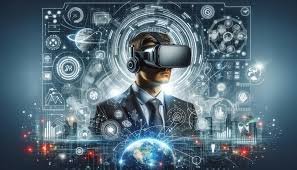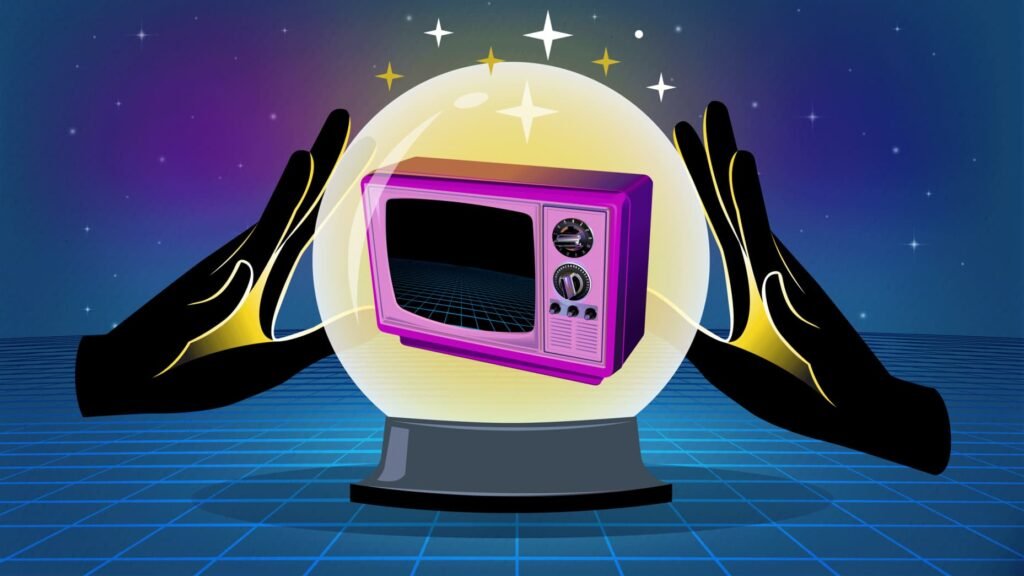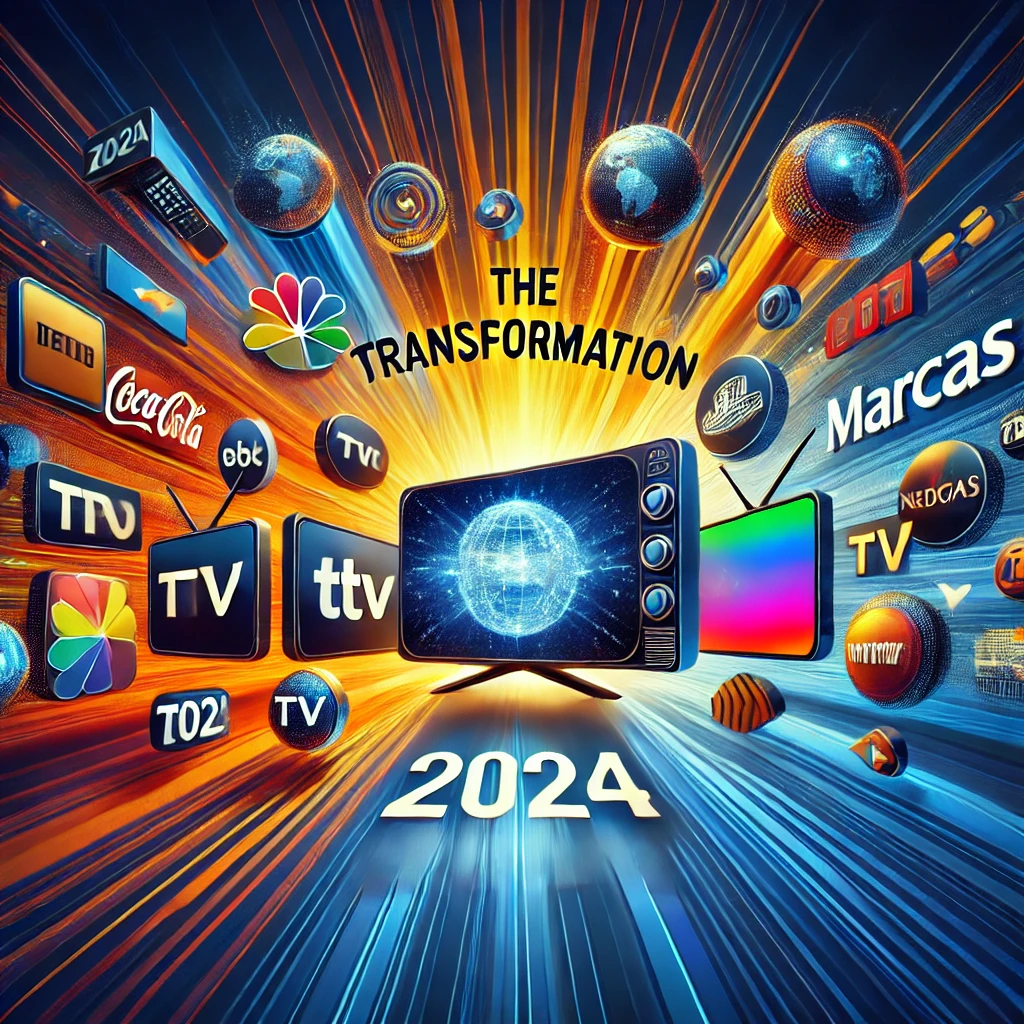Introduction
In an era where digital innovation is reshaping industries, the television landscape is no exception. Television, once a one-dimensional medium, has evolved dramatically with the advent of new technologies. The Transformation of https://noticviralweb.blogspot.com/2024/04/marcas–tv-2024.html provides an in-depth look into how these advancements are revolutionizing the TV industry. From the integration of augmented reality (AR) and virtual reality (VR) to the rise of AI-driven personalization, this transformation marks a significant shift in how we consume and interact with television content. This blog will explore these key technological trends and their impact on the television industry.
1. The Rise of Augmented Reality (AR) in TV
Augmented reality (AR) is no longer confined to the realms of gaming or mobile apps; it is making significant inroads into television. The Transformation of https://noticviralweb.blogspot.com/2024/04/marcas–tv-2024.html reveals how AR is being used to create more immersive viewing experiences. For instance, sports broadcasts are now incorporating AR to provide real-time statistics and interactive elements that enhance the viewer’s experience. This technology allows viewers to engage with the content in ways that were previously unimaginable, making television a more interactive and engaging medium.
AR technology is also being used in advertising, where brands can overlay digital content onto live TV broadcasts. This allows advertisers to create dynamic and interactive ads that capture the viewer’s attention more effectively. As AR continues to evolve, we can expect it to become an integral part of the television viewing experience, blurring the lines between the digital and physical worlds.
2. Virtual Reality (VR): A New Dimension of Television

Virtual reality (VR) is another technology that is transforming television. According to The Transformation of https://noticviralweb.blogspot.com/2024/04/marcas–tv-2024.html, VR offers viewers a completely immersive experience by transporting them into the world of the content they are watching. Whether it’s a live sports event, a concert, or a movie, VR allows viewers to feel as if they are physically present in the scene.
TV networks are increasingly investing in VR content, offering everything from VR documentaries to virtual reality experiences of popular TV shows. This technology not only enhances the viewing experience but also provides new opportunities for content creators to experiment with storytelling techniques. As VR technology becomes more accessible, it is likely to become a staple in the television industry, offering viewers an entirely new way to experience content.
3. AI-Driven Personalization: Tailoring Content to Viewers’ Preferences
One of the most significant technological advancements highlighted in The Transformation of https://noticviralweb.blogspot.com/2024/04/marcas–tv-2024.html is AI-driven personalization. With the vast amount of content available across various platforms, viewers can easily become overwhelmed by choices. AI algorithms help to simplify this process by analyzing viewers’ preferences and behavior to recommend content that is most relevant to them.
Streaming services like Netflix and Amazon Prime are at the forefront of this trend, using AI to curate personalized content libraries for each user. This level of personalization not only improves the user experience but also increases viewer engagement and loyalty. As AI technology continues to advance, we can expect even more sophisticated personalization features that will make television viewing more intuitive and enjoyable.
4. Interactive Content: Engaging Viewers Like Never Before
Another trend discussed in The Transformation of https://noticviralweb.blogspot.com/2024/04/marcas–tv-2024.html is the rise of interactive content. Interactive television allows viewers to influence the outcome of a show or participate in live events, making them active participants rather than passive viewers. This trend is particularly popular in reality TV and game shows, where viewers can vote on outcomes or participate in challenges in real-time.
Interactive content is also being used in educational programming, where viewers can engage with the material through quizzes and interactive lessons. This not only makes the content more engaging but also enhances the learning experience. As interactive technology continues to develop, we can expect to see more innovative ways to engage viewers across all types of television content.
5. The Shift to Multi-Platform Content Delivery
The way we consume television content has changed dramatically, thanks in part to the shift towards multi-platform content delivery. The Transformation of https://noticviralweb.blogspot.com/2024/04/marcas–tv-2024.html highlights how TV networks are adapting to this trend by offering content across various platforms, including streaming services, mobile apps, and social media. This approach allows viewers to access their favorite shows anytime, anywhere, making television more accessible than ever before.
Multi-platform content delivery also opens up new opportunities for cross-platform promotions and advertising, enabling networks to reach a wider audience. As this trend continues to grow, it will likely become the standard for how television content is delivered and consumed, further blurring the lines between traditional TV and digital media.
6. The Impact of 5G on TV Broadcasting

As 5G technology becomes more widespread, its impact on television broadcasting cannot be overlooked. The Transformation of https://noticviralweb.blogspot.com/2024/04/marcas–tv-2024.html discusses how 5G will enable faster and more reliable streaming, allowing for higher quality video and lower latency. This will enhance the viewer’s experience, especially when it comes to live broadcasts and real-time interactions.
5G will also enable new forms of content delivery, such as cloud gaming and augmented reality experiences, further expanding the possibilities for television. As 5G networks continue to roll out, we can expect a new wave of innovation in how TV content is produced and consumed.
7. The Role of Blockchain in Content Security
Blockchain technology is emerging as a powerful tool for securing content and combating piracy in the television industry. The Transformation of https://noticviralweb.blogspot.com/2024/04/marcas–tv-2024.html explains how blockchain can be used to track and verify the distribution of digital content, ensuring that it is only accessed by authorized users. This technology offers a new level of security for content creators and distributors, protecting their intellectual property in a digital age.
Moreover, blockchain can also be used to create new monetization models, such as microtransactions and smart contracts, providing more flexibility and control over how content is distributed and consumed. As blockchain technology continues to develop, it will likely play an increasingly important role in the television industry.
8. The Evolution of Content Creation with AI and Machine Learning
Artificial intelligence (AI) and machine learning are not only transforming how content is delivered but also how it is created. The Transformation of https://noticviralweb.blogspot.com/2024/04/marcas–tv-2024.html highlights the growing use of AI in content creation, from scriptwriting to video editing. AI-powered tools can analyze vast amounts of data to identify trends and generate content ideas, streamlining the production process.
Machine learning algorithms can also be used to create personalized content for viewers, such as tailored news reports or customized video playlists. As AI technology continues to evolve, it will likely play an even greater role in the creative process, offering new ways to produce and deliver content.
9. The Importance of Data Analytics in TV
Data analytics is becoming increasingly important in the television industry, as discussed in The Transformation of https://noticviralweb.blogspot.com/2024/04/marcas–tv-2024.html. By analyzing viewer data, TV networks can gain valuable insights into audience behavior and preferences, allowing them to create more targeted and effective content.
Data analytics also plays a crucial role in advertising, enabling networks to deliver personalized ads that are more likely to resonate with viewers. As data becomes more integral to the television industry, it will continue to shape how content is created, delivered, and monetized.
10. The Future of Television: What Lies Ahead?

The television industry is on the cusp of a new era, driven by rapid technological advancements. The Transformation of https://noticviralweb.blogspot.com/2024/04/marcas–tv-2024.html offers a glimpse into the future of television, where immersive technologies like AR and VR, AI-driven personalization, and blockchain security will become standard features.
As these technologies continue to evolve, they will undoubtedly reshape the television landscape, offering new opportunities for content creators, advertisers, and viewers alike. The future of television is bright, and those who embrace these innovations will be well-positioned to thrive in this dynamic and ever-changing industry.
Conclusion
The Transformation of https://noticviralweb.blogspot.com/2024/04/marcas–tv-2024.html highlights the profound impact that technology is having on the television industry. From the rise of augmented reality and virtual reality to the growing importance of AI-driven personalization, these advancements are revolutionizing how we consume and interact with television content. As the industry continues to evolve, it is clear that technology will play an increasingly central role in shaping the future of television. Whether you are a content creator, advertiser, or viewer, staying ahead of these trends will be key to thriving in this new era of television.
FAQS:
1. How is augmented reality (AR) being used in television?
AR is transforming television by creating more interactive and immersive viewing experiences. It is used in sports broadcasts to overlay real-time statistics and in advertising to deliver dynamic, interactive content. AR enhances viewer engagement by blending digital elements with live TV content.
2. What role does virtual reality (VR) play in the future of television?
VR offers viewers a fully immersive experience by transporting them into the scenes they are watching. This technology is being used for live events, concerts, and even virtual reality experiences of popular TV shows, providing a new dimension of content that feels real and engaging.
3. How does AI-driven personalization affect the TV viewing experience?
AI-driven personalization tailors content recommendations to individual viewer preferences, making it easier for viewers to discover shows and movies they are likely to enjoy. This improves the overall user experience and increases viewer engagement by delivering relevant content.
4. What is the significance of multi-platform content delivery in television?
Multi-platform content delivery allows viewers to access television content across various devices and platforms, such as streaming services, mobile apps, and social media. This approach makes TV more accessible and convenient, enabling viewers to watch their favorite shows anytime, anywhere.
5. How is blockchain technology improving content security in the television industry?
Blockchain technology enhances content security by providing a transparent and secure way to track and verify digital content distribution. This helps prevent piracy and ensures that content creators and distributors maintain control over their intellectual property, offering new ways to monetize content.
